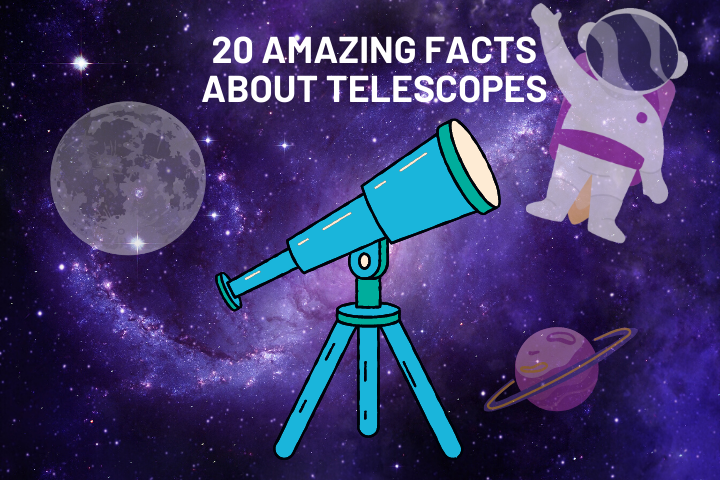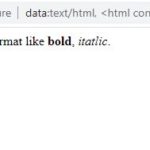I don’t know about you, but I’ve always been fascinated by telescopes. There’s something about these astronomical devices that just makes me want to learn more about them. And, as it turns out, there’s a lot to learn! Here are amazing facts about telescopes that are sure to astound and amaze you.

- Hans Lippershey, a Dutch eyeglass maker, is credited with the invention of the telescope in 1608. However, there is evidence that similar devices had been used earlier by other scientists. What sets Lippershey’s invention apart is that he was the first to apply for a patent for his device. Lippershey’s telescope used convex and concave lenses to magnify objects.
- The reflecting telescope, which uses a combination of mirrors and lenses, was invented in the 1600s by Isaac Newton.
- Early telescopes were used primarily by merchants and the military. The early telescopes were far inferior to today’s models, but they were good enough to allow sailors to spot distant landmarks and warn of approaching enemy ships.
- NASA’s Hubble Space Telescope is one of the most famous telescopes in the world. It was launched into space in 1990 and has made some incredible discoveries, including proving that the universe is expanding.
- One of the most powerful telescopes ever built is called the Keck Observatory. It has twin telescopes that are each 33 feet in diameter!
- As the world watched in awe as the first humans set foot on the moon, Pope Paul VI was among them, spending the night of July 20-21 1969 observing the historic event through a telescope at the Vatican Observatory. The pope was an avid supporter of science and believed that the Church had a responsibility to engage with the latest scientific discoveries.
- In the late 1800s, astronomer Percival Lowell was one of many scientists who believed that there was intelligent life on other planets. He was convinced that he had seen evidence of this when he observed what he thought were canals on Venus. Lowell spent hours staring at the planet through his telescope, making detailed sketches of the canals. However, what Lowell didn’t realize was that the eyepiece of his telescope was not properly adjusted. As a result, he was actually seeing the blood vessels in his own eye.
- The largest telescope in the world is located in Chile and is called the European Southern Observatory’s Very Large Telescope.
- Astronomers use a special kind of telescope called a spectrograph to study stars. Spectrographs split light up into all of its different colors so that astronomers can better understand what a star is made of.
- The first person to use a telescope to study the night sky was Galileo Galilei. He made some incredible discoveries, including the fact that Jupiter has four moons orbiting around it.
- Today, much of the night sky study is done remotely, with astronomers controlling telescopes via computers. This allows them to study objects in greater detail than ever before. It also makes it possible to study objects that are too far away to be seen with the naked eye. The internet has been a game-changer for astronomy, and it has opened up new possibilities for research.
- Jack Black’s mother worked on the Hubble Space Telescope as a satellite engineer.
- Earth 2.0, also known as Kepler-452b, is a planet discovered in 2015 using the Kepler Telescope that is one of the most similar to Earth yet found.
- In the early 1900s, astronomers using the Hooker Telescope on Mount Wilson in California made some of the most important discoveries in the history of astronomy. To transport the 100-inch mirror for the telescope, nearly 200 men had to guide a truck along a difficult, eight-hour drive to the top. The telescope was so powerful that it allowed astronomers to see for the first time that our Milky Way galaxy is just one of many galaxies in the universe.
- Gamma-ray telescopes are nothing to scoff at. They can detect some of the most mind-blowing explosions in the entire universe, caused by stars collapsing onto themselves and creating black holes. If one of these gamma-ray bursts were to occur within 6,000 light-years of us… well, let’s just say we wouldn’t be around to see the aftermath. We’d all be fried.
- In the 1960s, physicist Raymond Davis Jr. came up with an unusual way to detect neutrino particles streaming from the sun: he filled a tank with 100,000 gallons of dry-cleaning fluid. The neutrinos would interact with the atoms in the fluid, producing a telltale flash of light that Davis could detect with his telescope. That’s the weirdest telescope ever made. But it helped him achieve the Nobel Prize in 2002.
- Edwin P. Hubble was an astronomer who made some pretty big discoveries during his lifetime. One of those discoveries was that the universe is constantly expanding. This discovery changed the way scientists looked at the cosmos. Because of this discovery, the Hubble Space Telescope was named after him.
- What’s truly impressive about the James Webb Telescope is its sensitivity. It is so sensitive that it can detect the heat generated by a bumblebee as far away as the Moon. That’s right – this powerful telescope can see a bee-sized object more than 238,000 miles away.
- Adrien Auzout was a French astronomer who became interested in building a 1,000 ft long telescope in the 1600s. He believed that by magnifying objects to a great degree, he’d be able to see things that would otherwise be invisible to the naked eye. For example, he thought he could use a telescope 1,000 ft long to see animals on the moon.
- NASA has some pretty big plans for the 2030s. One of their most ambitious projects is to build a radio telescope on the far side of the moon (source). This telescope will be able to study the universe in a completely new way, free from interference from Earth’s atmosphere.
As you can see, there’s a lot more to telescopes than meets the eye! These fascinating devices have played an important role in our understanding of both our solar system and our universe as a whole. I hope this list has inspired you to learn even more about these amazing tools!





